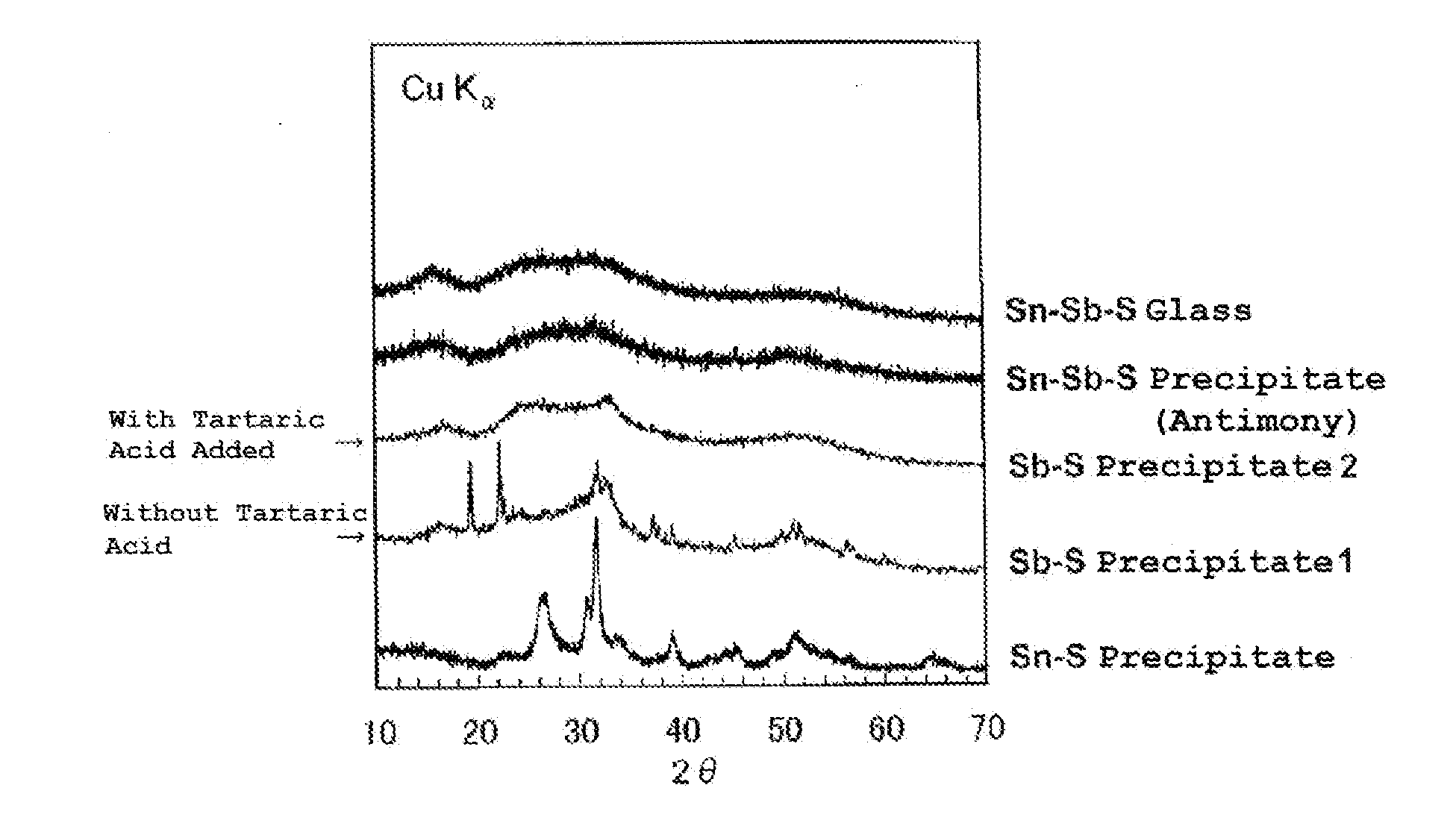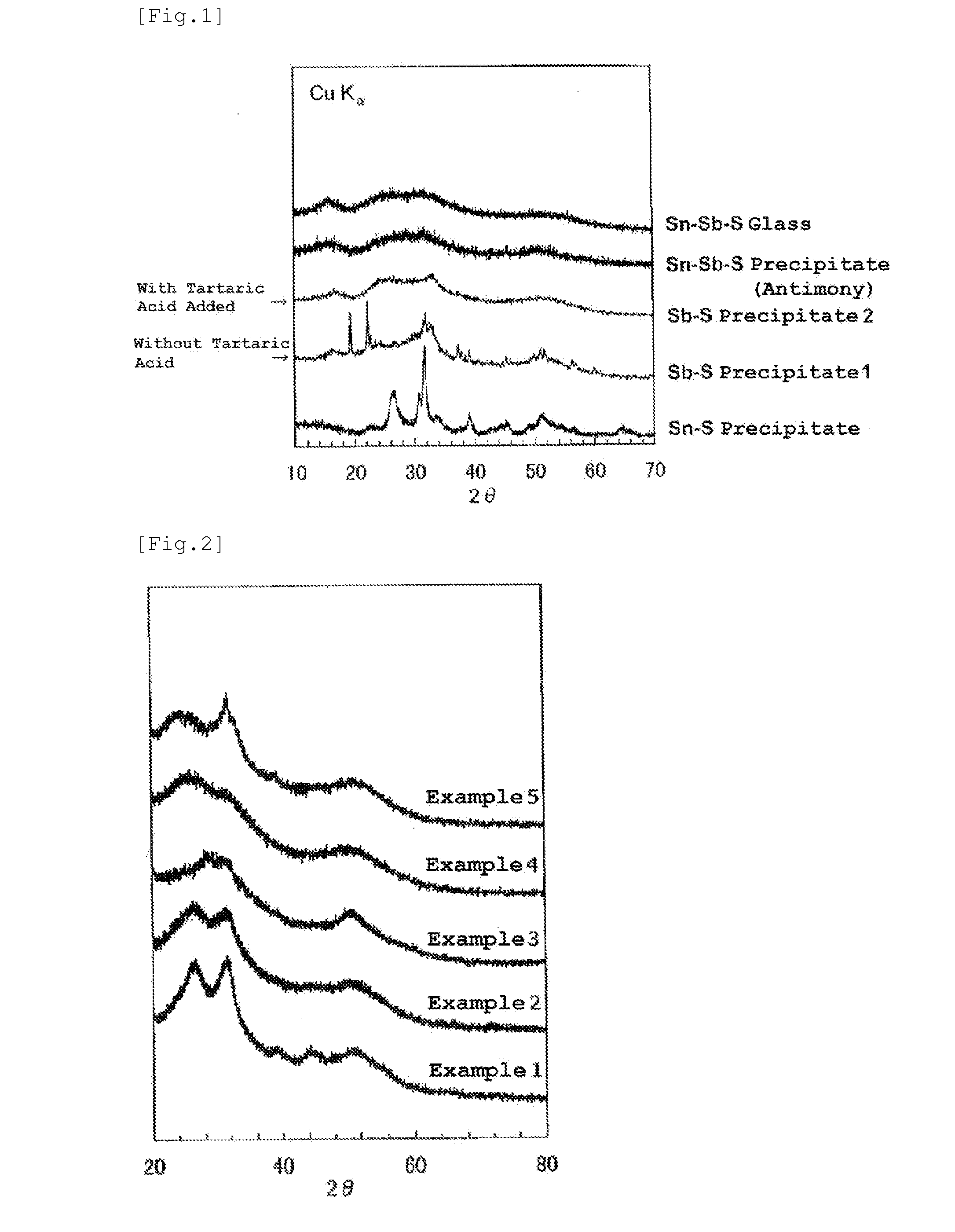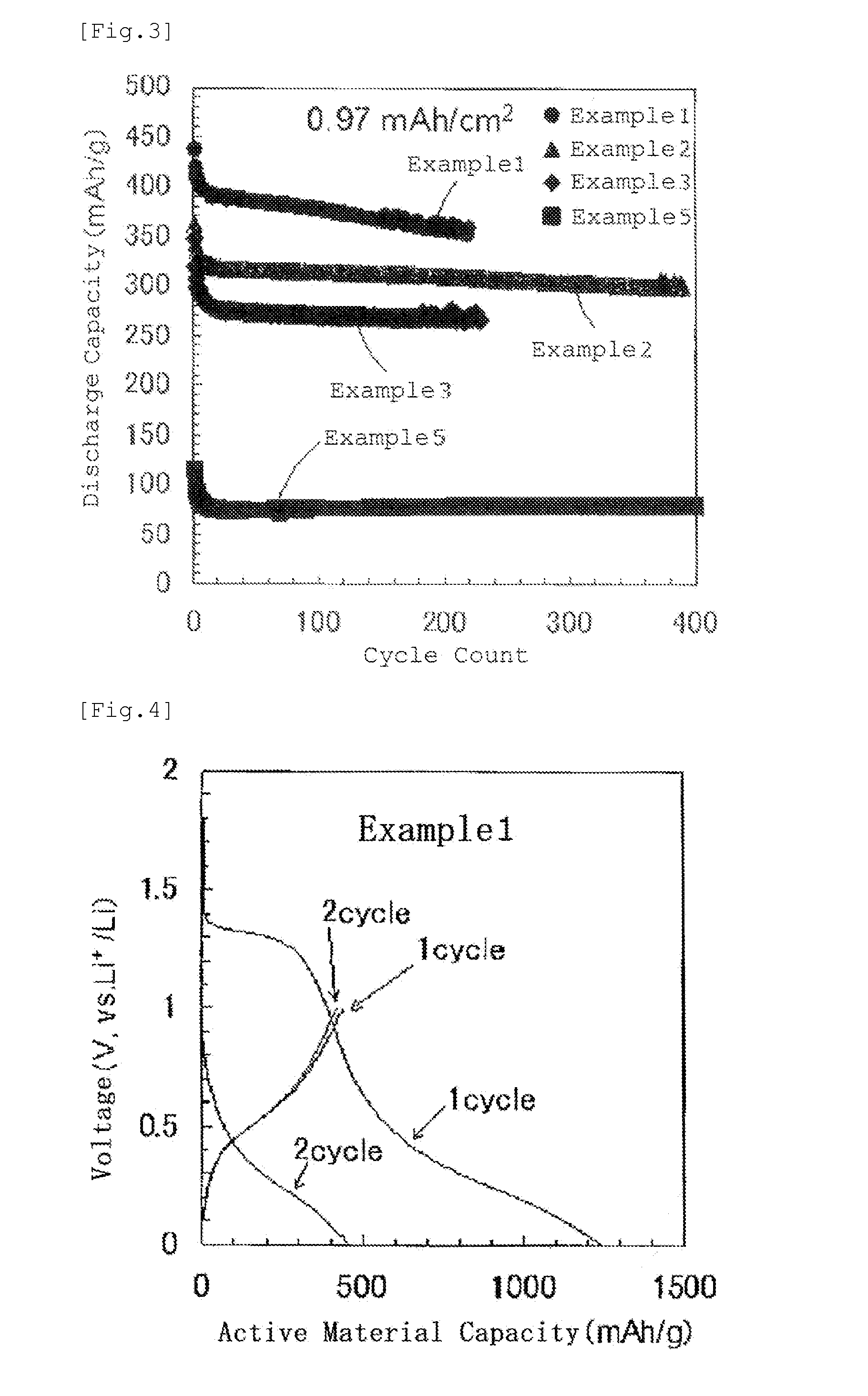Lithium secondary battery negative electrode active material and method for manufacturing same
- Summary
- Abstract
- Description
- Claims
- Application Information
AI Technical Summary
Benefits of technology
Problems solved by technology
Method used
Image
Examples
example
[0066]Hereinafter, the present invention will be explained more specifically by Examples but is not limited to these Examples.
(1) Preparation of Sn—Sb Based Sulfide
[0067]In order to make a predetermined ratio of Sn and Sb showing in Table 1 below, a tin chloride (SnCl2) aqueous solution was mixed with an antimony chloride (SbCl3) aqueous solution to produce a tin-antimony chloride aqueous solution. The amount of tartaric acid as shown in Table 1 was added to this tin-antimony chloride aqueous solution, and then a sodium sulfide aqueous solution containing the amount of sodium sulfide (Na2S) as shown in Table 1 was mixed with the solution to prepare precipitates of the Sn—Sb based sulfide.
TABLE 1Sn:SbTartaric(Molar Ratio)SnCl2•2H2OSbCl3NA2SAcidExample 190:108.148 g0.494 g 3.5 g4.160 gExample 270:306.370 g1.448 g 4.2 g4.104 gExample 350:504.982 g2.341 g5.08 g4.069 gExample 430:701.384 g1.584 g5.38 g4.201 gExample 510:900.500 g2.185 g6.48 g4.000 g
[0068]XRD patterns of the obtained prec...
PUM
 Login to View More
Login to View More Abstract
Description
Claims
Application Information
 Login to View More
Login to View More - R&D
- Intellectual Property
- Life Sciences
- Materials
- Tech Scout
- Unparalleled Data Quality
- Higher Quality Content
- 60% Fewer Hallucinations
Browse by: Latest US Patents, China's latest patents, Technical Efficacy Thesaurus, Application Domain, Technology Topic, Popular Technical Reports.
© 2025 PatSnap. All rights reserved.Legal|Privacy policy|Modern Slavery Act Transparency Statement|Sitemap|About US| Contact US: help@patsnap.com



